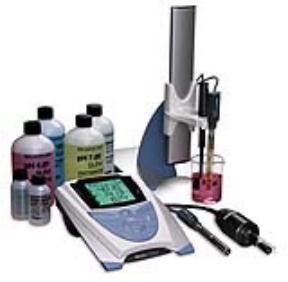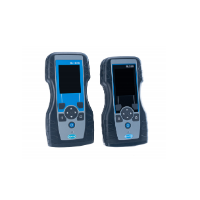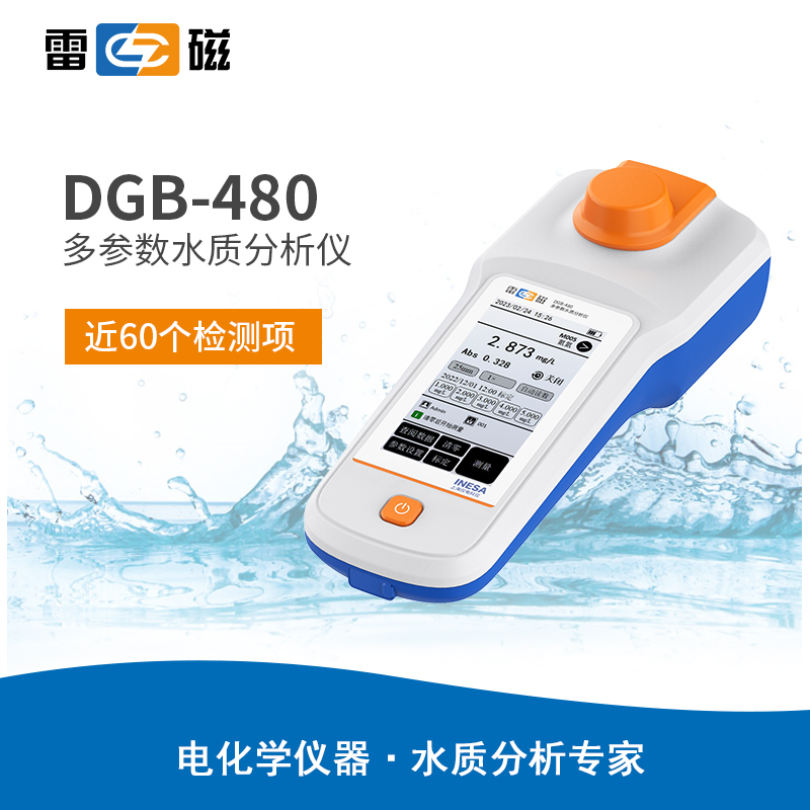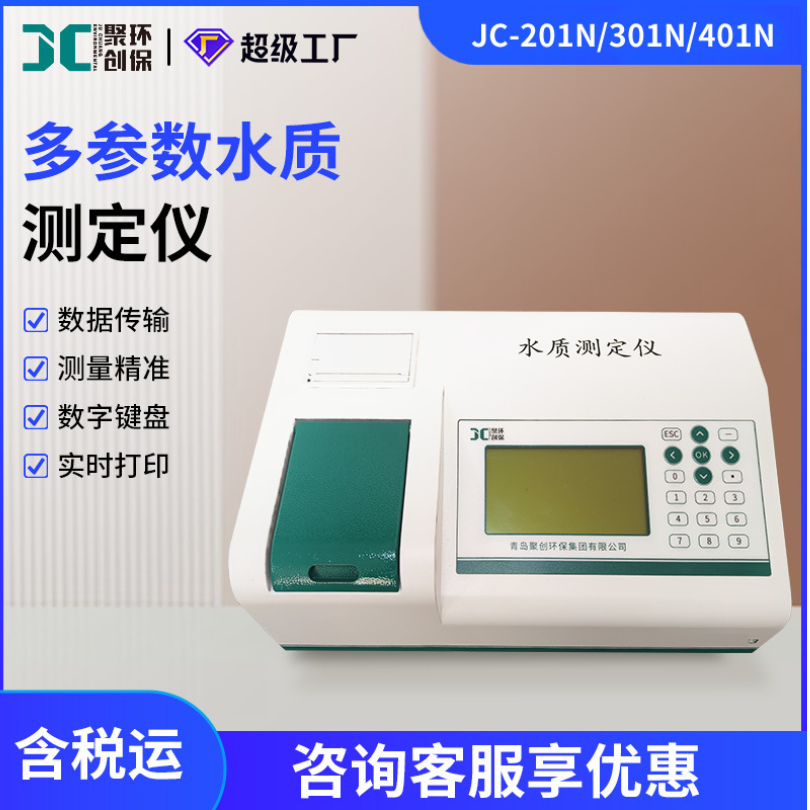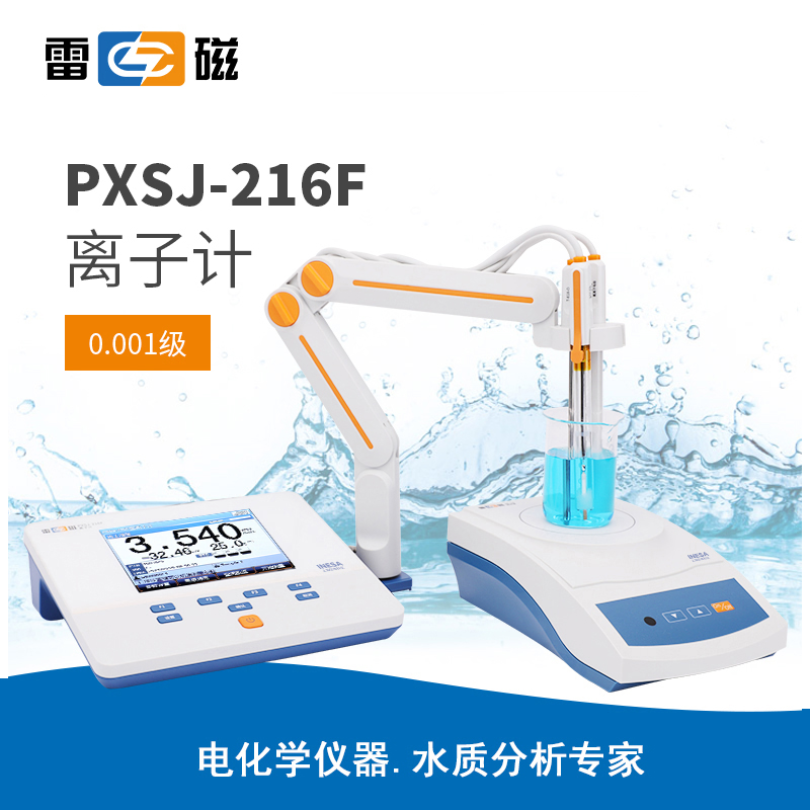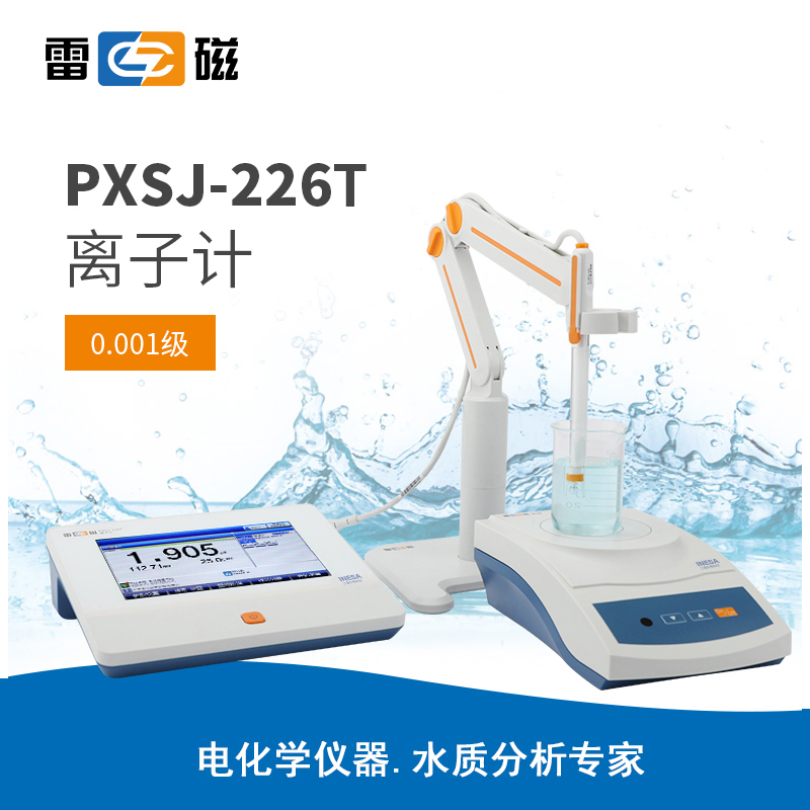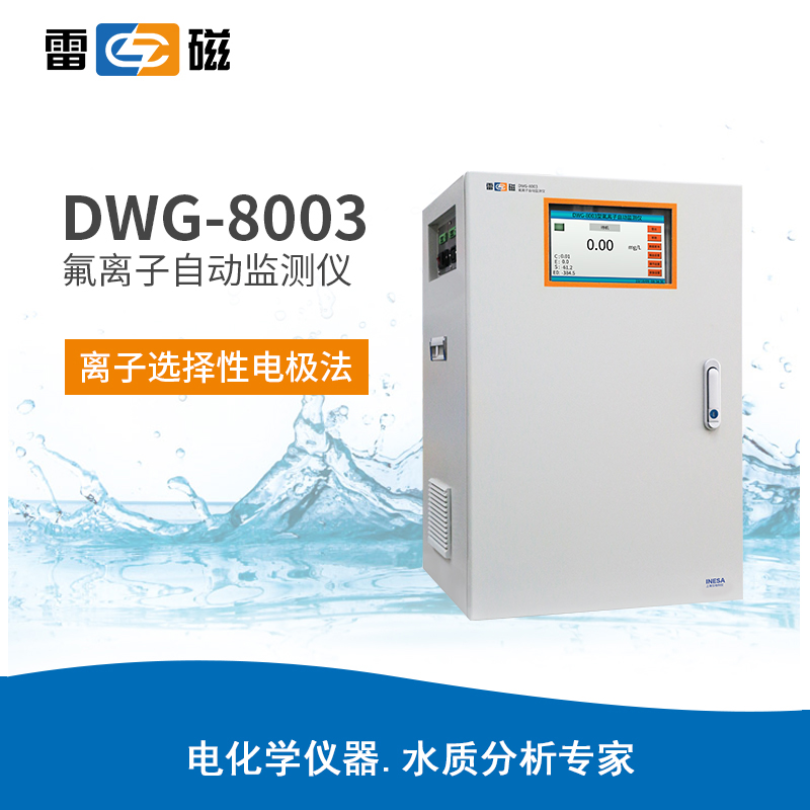本文章详细介绍了土壤中钾离子的测定,包括校准液、水样的准备,校准和测量过程,以及电极和仪表的维护等内容。
方案详情

Potassium inSoilPotassium inSoil Star SeriesMethod Note M-1018-E 03/05 RevB Calibration and Analysis ·Potassium Introduction 1. Allow all the standards and the samples to attain room temperature for precise measurements since themeasurement is temperature sensitive. 2.Calibrate the meter using the 1 ppm followed by 10 ppm standard, stirring the standards at a gentleand uniform rate. 3P.lace the electrodeand stirrer into the beaker with the 1 ppm standard such that the electrode tip isfully immersed in the solution. The stirrer should be positioned slightly below the tip of the electrode.Press the STIRRER key on the meter to turn the stirrer on. Press the CALIBRATE key. ·Soils·Orion ionplus@Sure-FlowCombinationlon SelectivePotassiumElectrode (ISE) This procedure measures potassium ion in aqueous extracts of soil samples. The method provides rapid,uncomplicated determinations of the potassium ion in soil sample. The direct measurement of ions usingion selective electrodes is a well-established technique frequently used as a standard method of analysis, as aquality control step and to fulfill labeling requirements. This procedure eliminates interferences associatedwith presence of color and solids. Recommended Equipment Cat. No. 4.Wait for stable reading (1-2minutes). Enter standard value of“1.00"using UP and DOWN arrowkeys and the DECIMAL/ DIGIT key. 5. Press the CALIBRATE key to accept 1 ppm standard and press the STIRRER key to turn the stirrer off.6.Rinse electrode and stirrer thoroughly with deionized water. Gently remove excess solution from theouter sleeve of the electrode by dabbing with a clean paper tissue. Do not wipe or rub the sensingelement. 7.Place the probes and stirrer into the beaker with the 10 ppm standard such that the electrode tip isfully immersed in the solution. The stirrer should be positioned slightly below the tip of the electrode.Press the STIRRER key on the meter to turn the stirrer on. 8.Wait for stable reading (1-2 minutes). Enter standard value of“10.0”using UP and DOWN arrowkeys and the DECIMAL/ DIGIT key. 9.Press the MEASURE key to accept 10 ppm standard and to move to the measure mode of the meter.Press the STIRRER key to turn the stirrer off. 10. Rinse electrode and stirrer thoroughly with deionized water. Gently remove excess solution from theouter sleeve of the electrode by dabbing with a clean paper tissue. Do not wipe or rub the sensingelement of the electrode. 10. Filters (Particle retention) Required Solutions Cat.No. 1. Potassium standard,0.1 M as K+ 921906 7. Graduated cylinders (50 mL, 100 mL) 8. Pipette (1mL, 10 mL) 2. Reference filling solution, optimum resultsTM“E” 900065 11. Place the probe and stirrer in a prepared sample such that the electrode tip is fully immersed in thesolution. Press the MEASURE key on the meter; the stirrer will turn on. The ISE:mg/L icon willflash as the measurement is being made. The ISE:mg/L icon will become solid and the display valuewill freeze when a stable reading is achieved. This value is logged and printed automatically and thestirrer turns off automatically. 3. ISA (Ionic Strength Adjustor) for potassium electrode 931911 4. Deionized water Calibration Standard Preparation 12. Repeat steps 10 and 11 for additional samples. 1. To prepare 100 ppm Potassium stock standard, pipette 2.56 mL of the 0.1 M standard into a 100 mLvolumetric flask. Dilute to the mark with deionized water. Mix well. Upon completion or samples, rinse electrode with deionized water and store the electrode according toinstructions in the Electrode Storage section of this method note. 2.To prepare 10 ppm standard, pipette 10 mL of the 100 ppm potassium standard into a 100 mLvolumetric flask. Dilute to the mark with deionized water. Mix well. 3.To prepare 1 ppm standard, pipette 10 mL of the 10 ppm potassium standard into a 100 mLvolumetric flask.Dilute to the mark with deionized water. Mix well. 4. Using a graduated cylinder, transfer 50 mL of the 10 ppm standard into a beaker. Pipette 1 mL ISA. 5. Using a graduated cylinder, transfer 50 mL of the 1 ppm standard into a beaker. Pipette 1 mL ISA. Sample Preparation Environmental Instruments 1. Weigh accurately 4 g (+/-0.1 g) of dry, finely powdered soil sample into a beaker and, using agraduated cylinder, add 100 mL of deionized water. Add a stirring bar. Cover the beaker with a watchglass, stir for30 minutes and filter. Iso9001:2000 2. Using a graduated cylinder, measure 50 mL of the sample into a beaker. Pipette 1 mL ISA. www.thermo.com ( Water Analysis Instruments 166 Cummi n gs C enterBeverly, MA 01915 USA M - 1 0 18-E 03/05 RevE248078 - 0 0 1 ) Toll Free:1-800-225-1480Tel:1-978-232-6000Dom. Fax:1-978-232-6015Int'lFax: 978-232-6031www.thermo.com/waterO 2005 Thermo Electron CorporationAll rights reserved 3. Repeat this procedure for additional measurements. Potassium inSoil Results Five aqueous extract of soil sample are measured for potassium. The results on the meter are displayed asppm of potassium in the solution. The concentration of the potassium in soil is calculated as % (w/w) usingthe formula: Potassium Concentration, % (w/w)=Cppm*V/100*W, whereCppm - potassium concentration in extraction solution; - sample weight W V - volume extraction solution Aqueous extract % Potassium Sample #1: 0.0140 . Standard Deviation: 0.0001 %CV 0.79 Electrode Storage For brief storage periods between sample measurements, store the electrode in the 100 ppm potassium standard.The filling solution in the potassium electrode should not be allowed to evaporate, which causes crystallization.For longer storage periods, refer to the electrode instruction manual. Potassium electrodes, which do notperform well, disassemble and reassemble the electrode, taking care not to over tighten the cap. If the electrodestill does not perform as described, replace the sensing module and repeat the slope check. If the slope checkstill fails, replace the electrode handle. Equipment Setup Electrode Setup-ionplus° 1. Remove the electrode sensing module from the plastic vial. Make sure both o-rings are in place on thesensing module. Remove the electrode handle from the box. 2.Grasp the outer sleeve of the electrode handle, with the fill hole end towards the electrode cap, and gentlypush the electrode inner stem through the outer sleeve. 3.Slide the outer sleeve, spring, and cap down the electrode cable until the outer sleeve is beyond theinner stem. 4.With one hand grasp the middle of the inner stem without touching the reference pellet. With the otherhand, screw the sensing module onto the stem until it stops and the sensing module is flush against thestem. Then tighten an additional one-quarter turn and stop. Do not over tighten. The sensing moduleshould be firmly attached to the inner stem. 5. Holding the electrode cable, slide the outer sleeve, spring and cap over the inner stem. 6.With one hand grasp the outer sleeve; do not touch the sensing membrane. With the other hand, pull onthe cable and gently screw the cap onto the inner stem. Stop when resistance is felt. Do not over tightenor continue to turn the cap! The cap will not completely stop! If the inner body turns at all, the cap is tootight and removal of the cap and reassembly is necessary. 7.Lift the filling solution bottle's spout to a vertical position. 8. Insert the spout into the filling hole in the outer sleeve of the electrode and add a small amount of fillingsolution to the chamber. Then tip the electrode to moisten the o-ring at the top and return electrode to avertical position. 9. Holding the electrode by the barrel with one hand, use the thumb to push down on the electrode cap,allowing a few drops of filling solution to drain wetting the inner cone. 10. Fill outer body with Optimum ResultsTM E filling solution to approximately 14 full. Release the electrodecap allowing the electrode’s outer sleeve to return to its original position immediately. If the outer sleevedoes not return to its original position immediately, check to see if the o-ring is moist and repeat steps 8-10until the outer sleeve has returned to its original position. Add more filling solution until the amount offilling solution within the electrode body is level with the bottom edge of the electrode filling hole. 11. Check the membrane surface of the sensing module to make sure it is dark and homogeneous with nobubbles on the inner surface. To ensure electrode continuity, grasp the outer sleeve and electrode cap andshake the sensing module end firmly. Meter Setup-4star benchtop For initial meter setup please follow the steps in the Quick Start Guide which is attached to the meter itself.The Quick Start Guide also contains a layout of the meter keyboard for reference. Please note words in allcapitals such as POWER indicates a key on the meter, and words in quotations such as“Unit"indicates adisplay on the meter screen Connect the electrode to the meter. Connect the stirrer to the meter. 3.Press the POWER key on the meter to turn the meter on. 4.Note that the arrow on the left of the screen indicates the active line. If the top line is not active, press theLINE SELECTION key to change the selected line to the top line. Then press the UP or DOWN arrowkeys to change the measurement mode of the top line to ISE. 5...Press the SETUP key to enter ISE Setup. Press the LINE SELECTION key to select the bottom line.Press the UP or DOWN arrow keys to select“3” for"rES”which is an abbreviation for resolution ornumber of significant digits. Press the LINE SELECTION key to accept value. 6.Press the LINE SELECTION key to select the middle line, and press the DOWN arrow key to select“nLln”which is an abbreviation for non-linear blank correction. 7. 1Press the LINE SELECTION key to select the bottom line. Press UP or DOWN arrow keys to select“off" for “nLln”. Press the LINE SELECTION key to accept value. 8.Press the LINE SELECTION key to select middle line, and press the DOWN arrow key to select “rAng”which is an abbreviation for measurement range. 9.Press the LINE SELECTION key to select the bottom line. Press the UP or DOWN arrow keys to select“HigH"for “rAng". Press the LINE SELECTION key to accept value. 10. Press the LINE SELECTION key to select middle line, and press the DOWN arrow key to select “Unit".11. Press the LINE SELECTION key to select the bottom line. Press the UP or DOWN arrow keys to select “mg/L”for“Unit". Press the LINE SELECTION key to accept value. 12. Press the MEASURE key to return to the measurement mode. If all steps were followed correctly the meter display will show three digits in the top line and“ISE: mg/L"tothe right of the top line. The meter and electrode are now ready for calibration. Note: The Orion Benchtop Stirrer must be turned on in General Instrument Setup before analysis, please see the QuickstartGuide for instructions. of of
确定
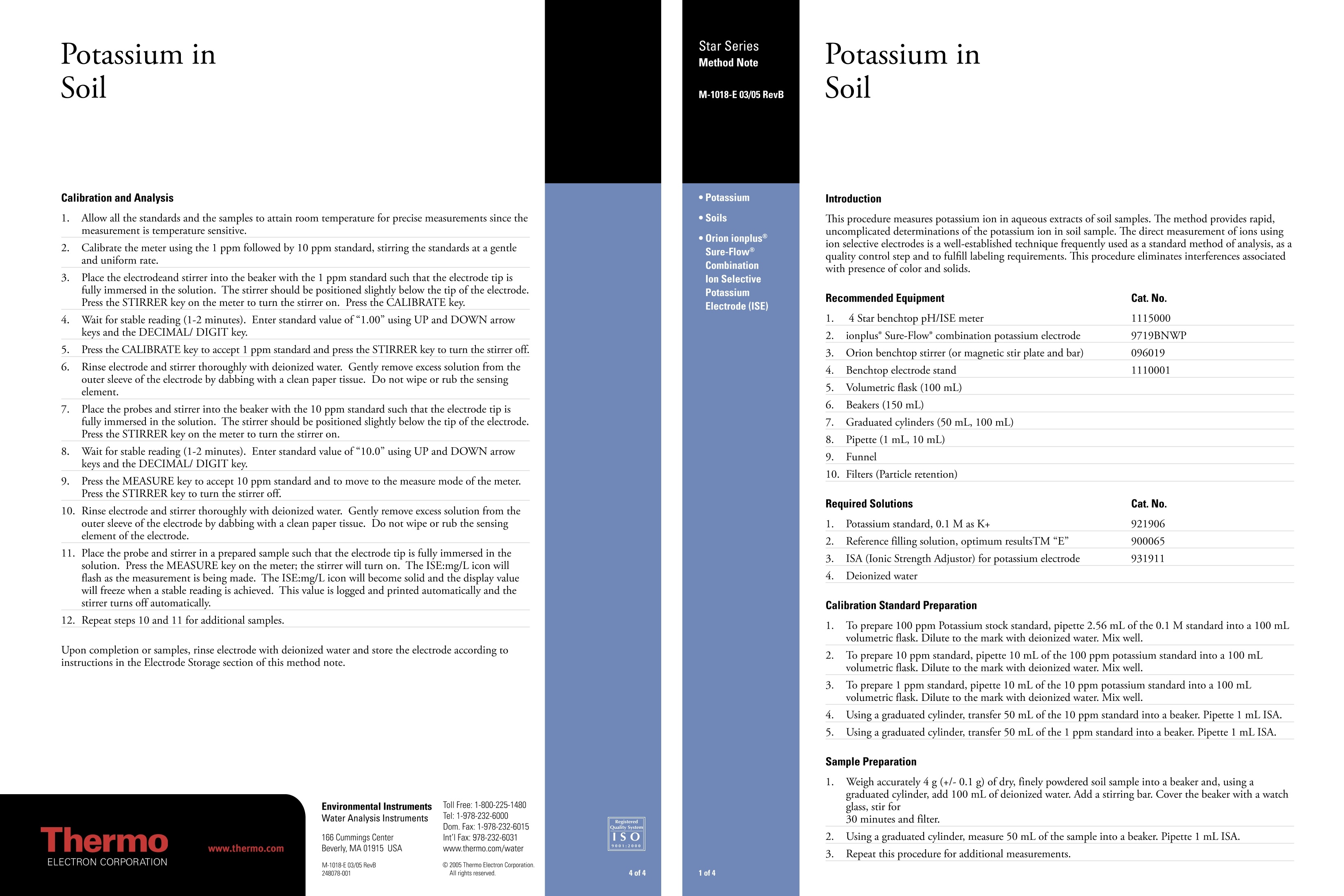
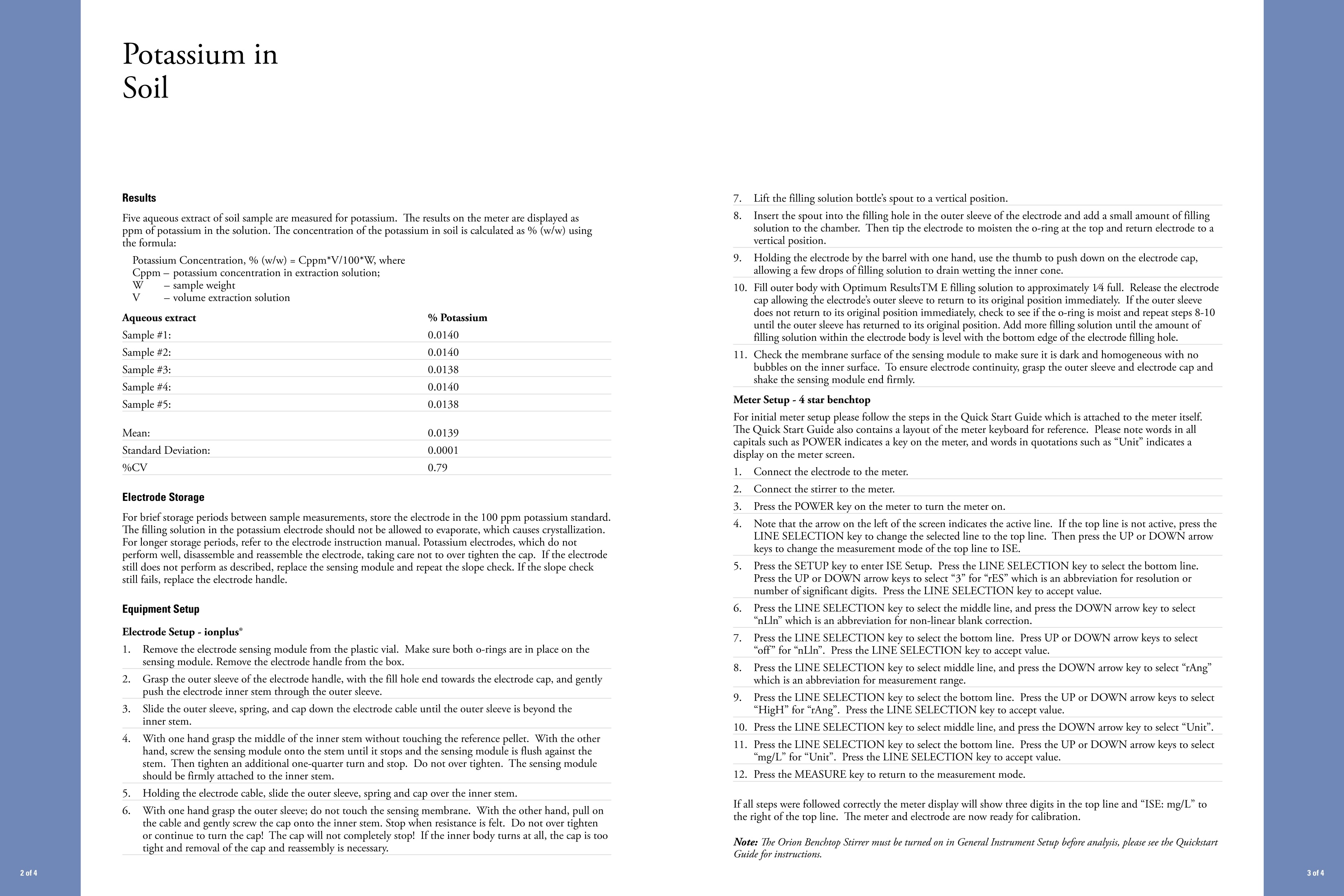
还剩1页未读,是否继续阅读?
赛默飞中国实验室产品事业部为您提供《土壤中(类)金属及其化合物检测方案 》,该方案主要用于土壤中(类)金属及其化合物检测,参考标准--,《土壤中(类)金属及其化合物检测方案 》用到的仪器有台式pH/ORP/ISE/溶解氧/电导率测量仪、Orion 4-Star台式(便携式)pH/离子浓度测量仪
推荐专场
相关方案
更多
该厂商其他方案
更多

